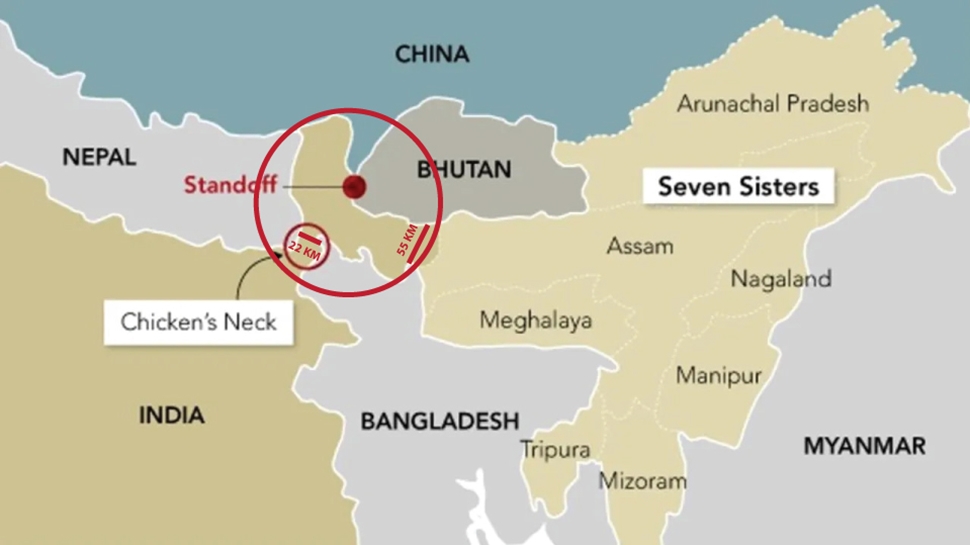India has strengthened its security architecture along the strategically vital Siliguri Corridor, popularly known as the Chicken’s Neck, by setting up three new Army garrisons across Assam, Bihar and West Bengal.
The newly established bases at Bamuni in Assam, Kishanganj in Bihar, and Chopra in North Dinajpur, West Bengal, are expected to significantly bolster defence preparedness and surveillance in the sensitive corridor that connects mainland India to the northeast.
)
The most prominent of these, the Lachit Barphukan Military Station at Bamuni near Dhubri, Assam, will function under the Tezpur-based 4 Corps (Gajraj Corps). This full-fledged installation will serve as a centre for surveillance, area control, counter-infiltration and technical situational awareness. The project, initiated on the proposal of Assam Chief Minister Himanta Biswa Sarma, was expedited following communal tensions in Dhubri during Eid. Eastern Commander Lt Gen R.C. Tiwari laid the foundation stone of the station on November 7 and inspected troops stationed at Chopra in North Bengal.
“The forward base at Kishanganj, strategically positioned in the middle of the corridor, is designed for rapid troop deployment and logistical support. Meanwhile, the base at Chopra, functioning under the Brahmastra Corps, will focus on quick response capabilities and intelligence integration along the border. Together, these installations aim to bridge the security gap along the 4,096-kilometre-long India-Bangladesh border, operating in coordination with the Border Security Force (BSF),” said an Army official.
Also read: B’desh readies new air-defence radar near India’s Chicken’s Neck
The enhanced security measures come against the backdrop of growing concerns over Bangladesh’s military activities near India’s northern border. Intelligence agencies have flagged the construction of a large hangar and radar system at the Lalmonirhat airbase in northern Bangladesh—just 16 kilometres from India’s vulnerable Chicken’s Neck. The airfield, which Bangladesh had earlier pledged not to use for military purposes, is reportedly undergoing an upgrade including facilities for missile systems and Turkish- and Chinese-made drones.
Dhaka-based security sources indicated that the airbase could potentially serve as a missile launch site, raising serious concerns in New Delhi. The Indian government, in a statement to the Lok Sabha on August 8, confirmed that it was monitoring developments related to the Lalmonirhat airbase. Minister of State for External Affairs Kirti Vardhan Singh stated that India “continues to monitor all developments having a bearing on national security and takes all necessary measures to safeguard it.”
Tensions have further escalated following political shifts in Bangladesh. Interim government chief advisor Muhammad Yunus reportedly presented a distorted map during a meeting with Pakistan’s army chief in Dhaka in October, depicting India’s northeast as “landlocked” and referencing a “Greater Bangladesh.” His outreach to China and Turkey for defence cooperation and investments has deepened Indian apprehensions over shifting regional alignments.
Analysts believe that India’s establishment of new garrisons signals not only a defensive measure but also a more assertive posture in the region. “The Army’s ongoing ‘Trident 2025’ tri-service exercise on the western front with Pakistan also reflects this two-front readiness strategy,” the Army official said.
With these developments, the Siliguri Corridor, once seen as India’s strategic vulnerability, is being transformed into a “spine of steel”, marking a decisive shift in South Asia’s security dynamics.


)